Alessandro, thank you for being here today. I’m very happy to explore this conversation together. Before we dive into things, let’s give some context to our readers. How would you describe yourself, your work, and this incredible journey so far?
First of all, Luca, grazie for inviting me. Let’s say I’m an engineer at heart. What does that mean? I’ve always wanted to understand how everything works — machines, processes, or businesses — and once I understand, I can’t help but try to fix it and make it better.
My journey started in high-tech semiconductors, and later I moved into startups. I founded two companies — one failed to get funding, but the second succeeded in Europe. From there, I joined the world of medical diagnostics at Siemens. That’s where I led significant R&D integration after Siemens acquired three companies, and I eventually oversaw multi-billion-dollar business units.
I spent my career at the intersection of engineering, innovation, and business leadership, and now here I am in Europe, exploring new opportunities and helping wherever I can.
The way you blend deep technical knowledge with leadership in large organizations is impressive. You talked about leading the integration of three companies at Siemens — a mammoth task. What are the key challenges of driving innovation and change at such a massive scale?
That experience was monumental, Luca. Let me break it into three main challenges.
First, there’s the product portfolio harmonization. When three companies come together, each brings its own products and strengths. For example, in blood diagnostics, every system can handle around 100 tests, but they are rarely the same 100 tests. So, the challenge is figuring out which tests to prioritize, which ones to combine, and where to invest millions of dollars in future development.
Then, you have infrastructure and IT integration. Each company comes with its own systems — financial software, inventory management tools, and engineering platforms. Siemens’ approach was to let the three companies negotiate and decide which system was the “best,” but this took nearly four years. From my perspective, imposing a single standard from the start would have been faster and ultimately more efficient, as opposed to endless debate.
Finally, there’s the issue of culture. This is by far the hardest to manage. You can’t impose one monolithic “company culture” on thousands of people across different countries and contexts. Instead, you need to focus on creating strong leadership teams while allowing local cultures to thrive. A centralized culture can exist at the leadership level, but every site, every location will have its own unique way of working.
You mentioned Siemens’ move into diagnostics and the vision to integrate imaging, blood tests, and patient data. This feels like a glimpse into the future of healthcare. Where does AI fit into this transformation?
AI is central. Healthcare is getting so complex that doctors alone can’t process all the information available. Siemens had a vision: combine patient imaging, blood test data, and electronic health records to provide actionable insights for doctors. For example, if a patient has heart disease, diabetes, and COVID-19, AI can analyze thousands of similar cases to suggest the best treatment options based on outcomes.
Another critical area is predictive diagnostics. During COVID-19, we developed an AI-driven algorithm using six blood parameters. It could predict with high accuracy whether a patient would need a ventilator. That insight helped doctors prioritize care.
The same approach applies to diseases like Alzheimer’s and diabetes. These conditions require looking at multiple biomarkers in combination, rather than a single clear indicator. AI brings all those data points together to create probabilities and insights that would otherwise take years to analyze manually.
That’s extraordinary — using AI to save lives through smarter data analysis. Let’s shift gears a bit. You also spoke about laboratory optimization, which sounds both technical and practical. Can you expand on that?
Of course. Let’s imagine a mid-sized hospital laboratory that runs hundreds of blood tests daily. Each test takes a different amount of time — some might require 10 minutes, others as long as 40 minutes. To complicate things, each instrument can only run a limited number of tests simultaneously.
The problem gets even more complex because some tests, like those for rare conditions, might only be run once a week, while others, like standard screenings, are run hundreds of times a day. You can’t mix certain samples, such as HIV and hepatitis, due to contamination risks.
AI can optimize this entire scenario. It can determine how to prioritize tests, schedule runs efficiently, and ensure that resources are used to their full capacity. Ultimately, this saves time, reduces costs, and improves accuracy.
That ties perfectly to another area you mentioned — tenders and contracts for diagnostic equipment. It’s a mix of strategy, finance, and negotiation, isn’t it?
Absolutely. Hospitals and governments issue tenders worth millions, requesting hundreds of tests and associated equipment. The challenge is knowing how to price your offer.
Optimizing bids is incredibly complex because there are so many variables. You have the upfront equipment costs, ongoing maintenance fees, consumable pricing, and the cost of service visits. Sometimes, you can offer a competitive price on one test while charging slightly more for another to balance the margin.
AI can transform this process by analyzing historical data, identifying trends, and helping sales teams optimize bids. It’s about finding the sweet spot between being competitive and maintaining profitability.
That’s a brilliant insight into how AI can impact not only healthcare but business operations. Speaking of impact, you’ve also mentioned another critical challenge: spotting financial trends in global markets. How do leaders like yourself identify opportunities or risks across regions?
Leaders need real-time visibility into performance. Take Europe, for example. Suppose Germany suddenly shows a spike in diagnostic equipment sales. Is this a sustainable trend or just a one-off event?
AI can analyze regional performance, highlight anomalies, and identify shifts before they become obvious. This allows leaders to act quickly and confidently. It’s about cutting through the noise and seeing the bigger picture.
Alessandro, this conversation has been incredibly insightful — we’ve explored innovation, AI, and leadership through your vast experience. Before we close, is there one key lesson you’d like to share with our readers, especially the younger generation?
Yes. Stay curious. The world is changing faster than ever, and technology — especially AI — is transforming every industry. Embrace complexity. Learn to analyze data and see the big picture. And most importantly, collaborate. Innovation happens when diverse minds come together.
I couldn’t agree more. Thank you, Alessandro, for sharing your story, insights, and vision. It’s been a privilege to learn from your experience.
Grazie, Luca. It’s been a pleasure to reflect on this journey with you.

